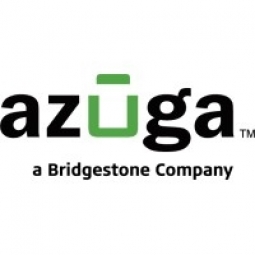公司规模
SME
地区
- America
国家
- United States
产品
- Azuga GPS device
技术栈
- GPS technology
- Mobile data collection system
实施规模
- Enterprise-wide Deployment
影响指标
- Productivity Improvements
- Customer Satisfaction
技术
- 传感器 - 全球定位系统
适用行业
- 石油和天然气
适用功能
- 物流运输
- 现场服务
用例
- 车队管理
- 远程资产管理
服务
- 系统集成
关于客户
Since 1992, Northwest Tank has proudly served gasoline companies throughout the west with the highest quality petroleum systems testing and environmental compliance solutions available. In addition to the many testing services they provide, Northwest Tank has created its own industry-leading, propriety software that enables them to schedule, track and closely monitor compliance testing for every customer’s site. Integrating with Azuga GPS device technology creates automation possibilities in billing, vehicle maintenance and auditing not available before.
挑战
Northwest Tank was already using a GPS system to deliver better customer service and drive more efficiency in the field. Remy Cano, the President of Northwest Tank was looking for a solution that could provide accurate information directly off the engine computer especially with regard to idling, actual fuel used and driver behavior. His research revealed that traditional black-box systems were not easily able to provide this level of detail without an expensive upgrade that involved taking vehicles out of service and waiting around for installers to show up. Remy expanded his search to look for an affordable solution that could be installed quickly, was easy to move around between vehicles and was comprehensive in functionality.
解决方案
Remy’s research led to a few providers that he then put through a comparative analysis. He chose the Azuga GPS device solution based on overall functionality, customer support and willingness to partner on the product roadmap. Northwest Tank’s proprietary mobile data collection system combined with Azuga GPS device software now provides an automated customer data and asset management system that frees up valuable time to shift from business management to business building.
运营影响

Case Study missing?
Start adding your own!
Register with your work email and create a new case study profile for your business.
相关案例.

Case Study
Taking Oil and Gas Exploration to the Next Level
DownUnder GeoSolutions (DUG) wanted to increase computing performance by 5 to 10 times to improve seismic processing. The solution must build on current architecture software investments without sacrificing existing software and scale computing without scaling IT infrastructure costs.

Case Study
Remote Wellhead Monitoring
Each wellhead was equipped with various sensors and meters that needed to be monitored and controlled from a central HMI, often miles away from the assets in the field. Redundant solar and wind generators were installed at each wellhead to support the electrical needs of the pumpstations, temperature meters, cameras, and cellular modules. In addition to asset management and remote control capabilities, data logging for remote surveillance and alarm notifications was a key demand from the customer. Terra Ferma’s solution needed to be power efficient, reliable, and capable of supporting high-bandwidth data-feeds. They needed a multi-link cellular connection to a central server that sustained reliable and redundant monitoring and control of flow meters, temperature sensors, power supply, and event-logging; including video and image files. This open-standard network needed to interface with the existing SCADA and proprietary network management software.

Case Study
Refinery Saves Over $700,000 with Smart Wireless
One of the largest petroleum refineries in the world is equipped to refine various types of crude oil and manufacture various grades of fuel from motor gasoline to Aviation Turbine Fuel. Due to wear and tear, eight hydrogen valves in each refinery were leaking, and each cost $1800 per ton of hydrogen vented. The plant also had leakage on nearly 30 flare control hydrocarbon valves. The refinery wanted a continuous, online monitoring system that could catch leaks early, minimize hydrogen and hydrocarbon production losses, and improve safety for maintenance.






